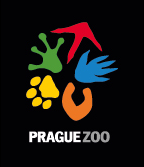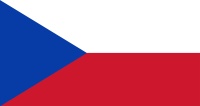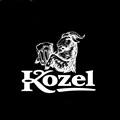Gorilla family
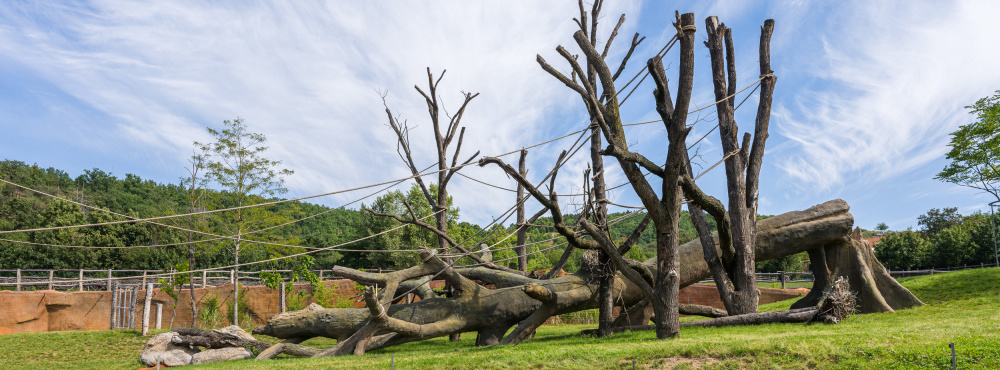
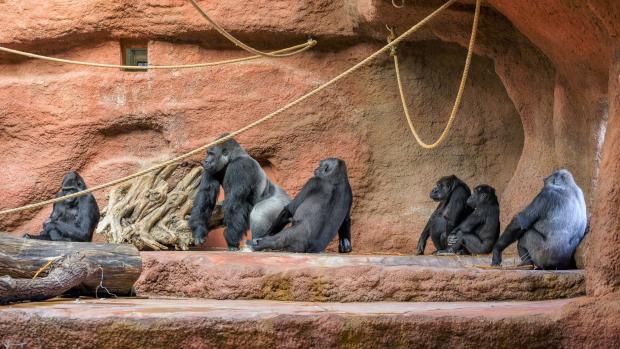 The gorilla family group in the Dja Reserve at the beginning of 2024, before Gaia was born. From left to right: Duni with her daughter Mobi in her arms, Kisumu (the male), Kijivu, Shinda, Ajabu and Kamba. Photo: Petr Hamerník, Prague Zoo
The gorilla family group in the Dja Reserve at the beginning of 2024, before Gaia was born. From left to right: Duni with her daughter Mobi in her arms, Kisumu (the male), Kijivu, Shinda, Ajabu and Kamba. Photo: Petr Hamerník, Prague Zoo
The family group of western lowland gorillas in the Prague Zoo’s Dja Reserve consists of the dominant male Kisumu, several females of various ages, and their offspring.
The gorillas share their enclosure with another species—the mantled guereza. The thoughtfully designed space allows the monkeys to move freely to their private off-display area whenever they wish.
Besides the indoor exhibit, the gorillas and guerezas have access to a spacious outdoor enclosure with large trees and an artificially created stream feeding a nearby “marshy” pond where the gorillas can wade.
From the life of gorillas
A gorilla family group is usually made up of an adult silverback male and several females with their offspring. The young blackback males leave the group to start their own family when they reach sexual maturity. Adult females join other adult males or other groups, which they can switch several times in their lifetime.
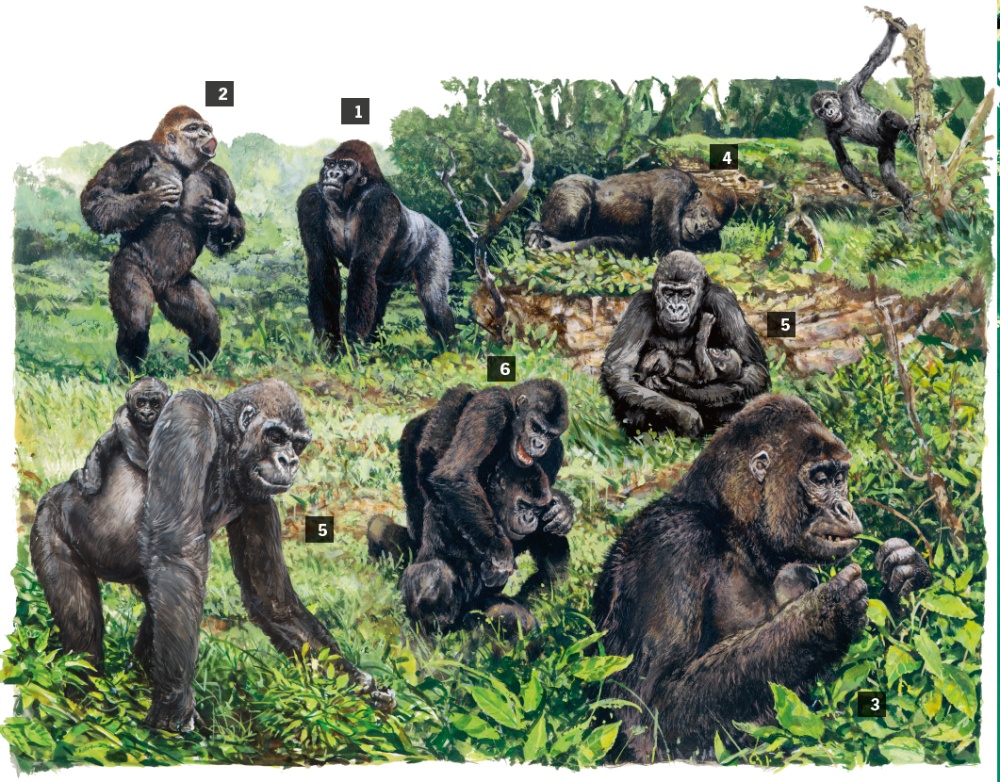
Illustration: Pavel Procházka
- SILVERBACK MALE
The dominant male differs from the others by the silvery colour of his back, which he acquires after the twelfth year of life. He decides about the movements of the troop, protects it from danger and settles conflicts. Despite his size and strength, he is very gentle and patient with other members of the group. - CHEST-BEATING
Gorillas communicate with a wide range of sounds, postures and rich facial expressions. By typical chest beats, the males show off their bulk, either to attract females or to intimidate rivals. The threatening roar is amplified by resonant air sacs in the male‘s chest cavity. - ALL-DAY FEASTING
Gorillas spend most of the day searching for food, which consists mainly of leaves, fleshy stems or—in lesser extent—fruit. They will often peel off the tough covering of the stems and eat only the soft interior. Because they have plenty of food all around, they are quite sedentary. They walk at most one to two kilometres a day. - A BED OF LEAVES
Gorillas build nests of branches, leaves and moss for their night and midday rest. Each day they build new ones on the ground or on low branches or fallen tree trunks. Although they can climb well, they are heavy and therefore tend to climb trees only when they are young. - CARING FAMILY
A newborn gorilla is completely dependent on its mother. She carries it on her belly for the first three months, but later she starts to carry it on her back. She is often assisted by other females in the group, who act as “aunties”. The father mainly protects his offspring against males from other groups. - SCHOOL BY PLAY
The older juveniles spend a lot of time playing together and interacting with each other. The lessons they learn will help them to gain social status or a mate in the future. Once the young gorillas grow up, they usually leave their natal group.
Who is who among the gorillas in the Dja Reserve
KISUMU
Date and place of birth: 27 May 1997, Hellabrunn Zoo (Germany)
Identifying features: silver fur, largest size
Kisumu was raised by his parents Sonja and Roututu in Hellabrunn Zoo, Munich. On 4 March 2004, he was moved to a bachelor group in Schmiding Zoo, Upper Austria. In September 2022, Kisumu was transferred to the new gorilla pavilion at Prague Zoo, the Dja Reserve, where he was given the opportunity to start his own family.
The keepers in Schmiding called Kisumu “the king” due to his calm and majestic nature. Usually, he is gentle and curious, though sometimes cheeky. He can be nervous and easily startled by sudden loud noises from visitors.
Kisumu is fond of people he knows well. “You become his best friend when you feed him and give him his favourite treats,” revealed his Austrian keepers. “He loves it when we imitate gorilla calls and various sounds. He also enjoys when someone he likes laughs—then he hums contentedly.”
Among other gorillas in the bachelor group, Kisumu preferred playful individuals. When other males pressed him too hard, Kisumu usually reacted calmly and took a long time to get angry. However, keepers say that once his patience runs out, he can be aggressive and attack.
Kisumu really likes burlap blankets, and from his varied diet, he especially enjoys raw peanuts and, as a treat, apples.
The keeper who cared for Kisumu for six years in Austria describes him as the best gorilla she has ever met. It was hard for her to say goodbye but she is happy Kisumu now has the chance to have his own harem and family.
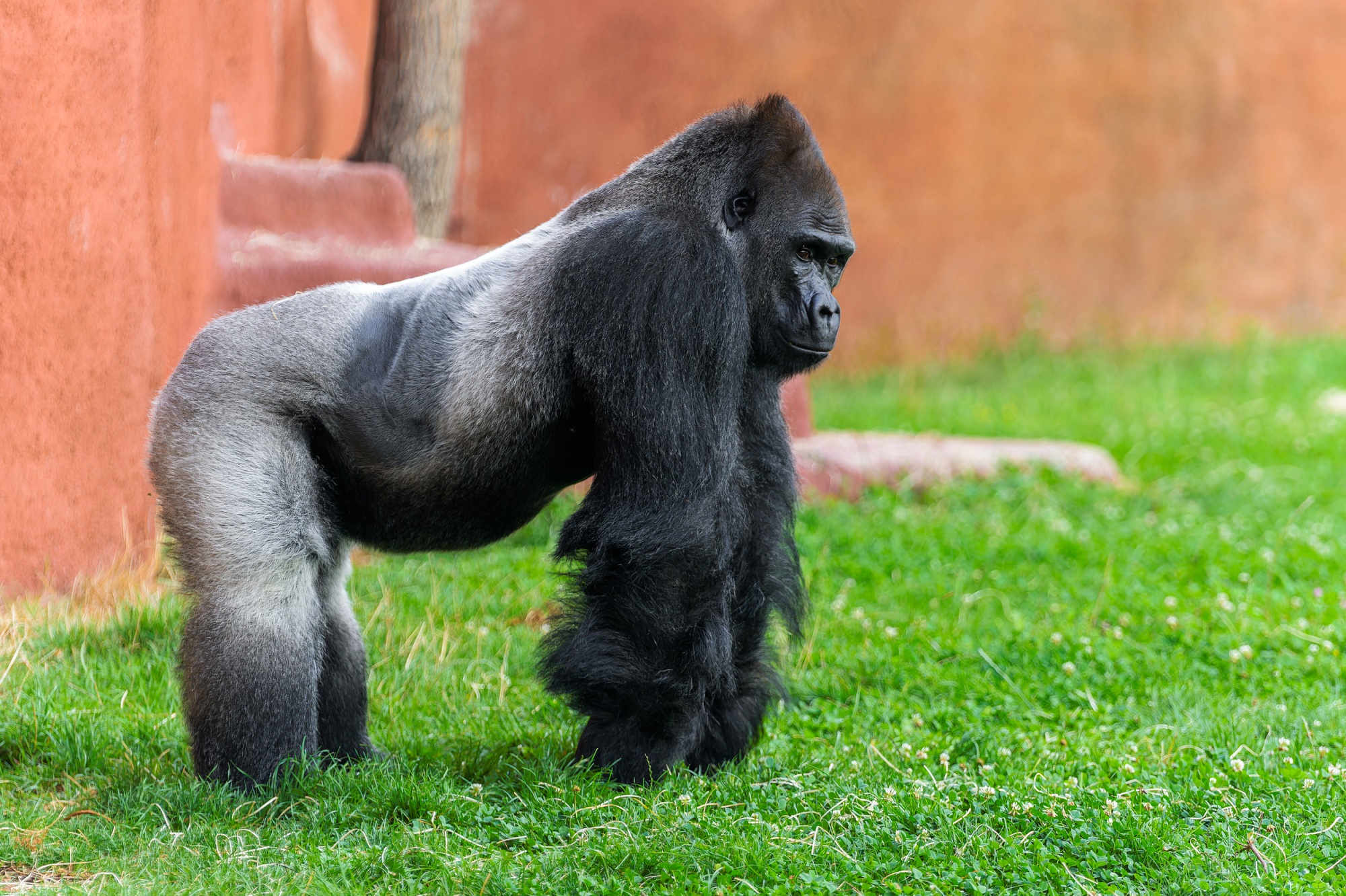
Kisumu, a western lowland gorilla male, in the outdoor exhibit of the Dja Reserve. Photo: Petr Hamerník, Prague Zoo
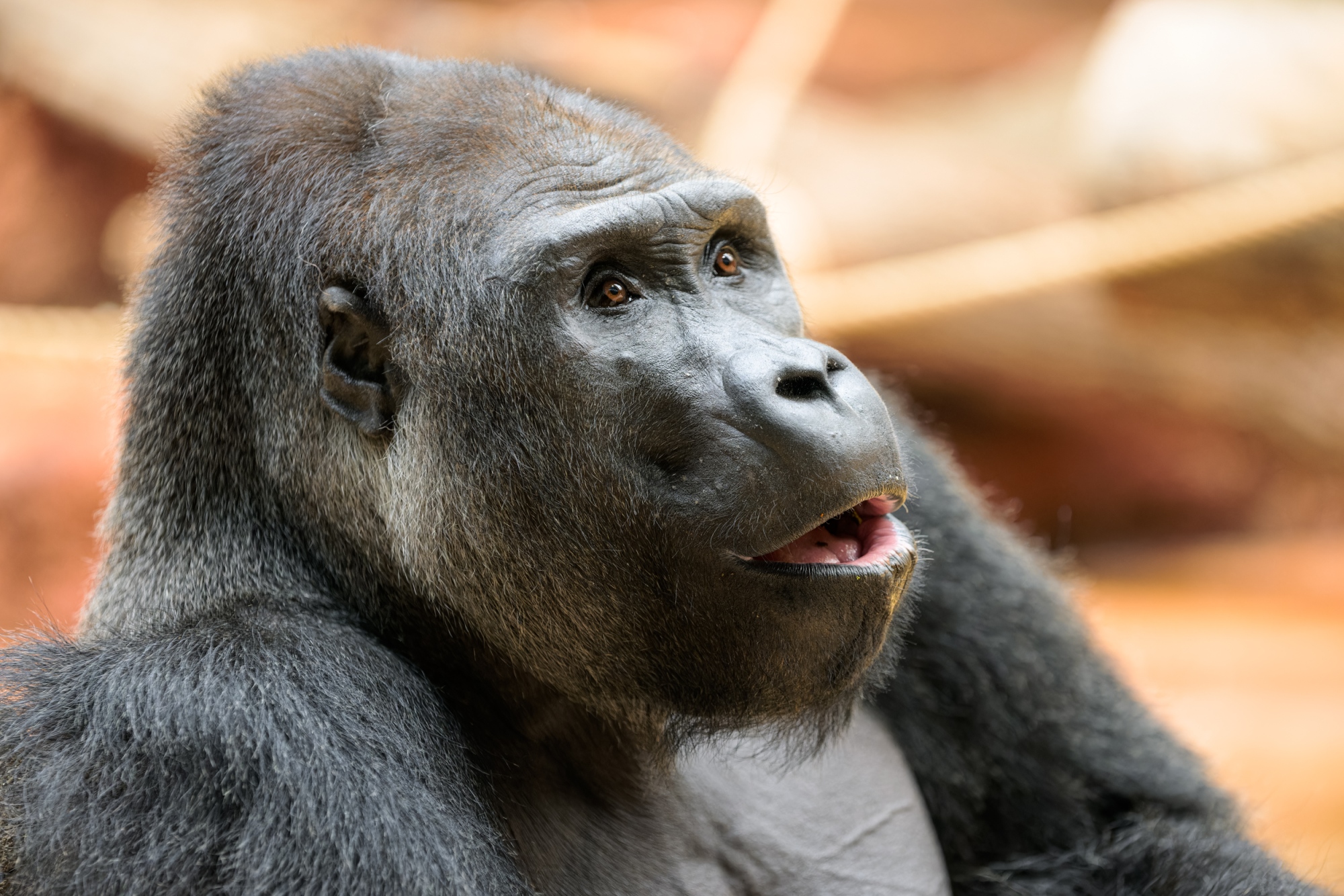
Kisumu, a western lowland gorilla male. Photo: Petr Hamerník, Prague Zoo
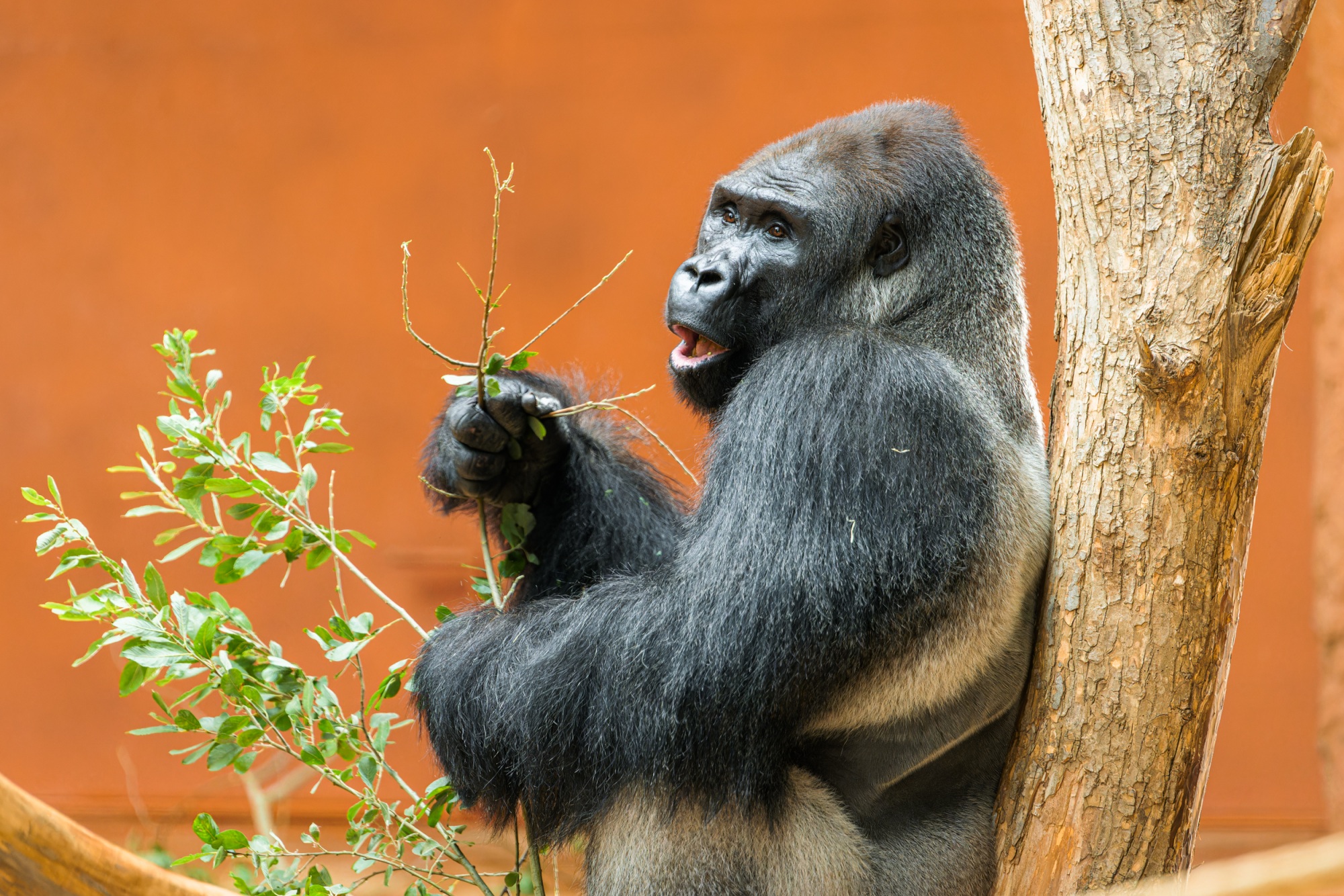
Kisumu, a western lowland gorilla male. Photo: Petr Hamerník, Prague Zoo
DUNI
Date and place of birth: 16 April 2013, Cabárceno Natural Park (Spain)
Identifying features: reddish forehead, horizontal wrinkle below the nose
The only daughter of the famous “Prague” female Moja (the first gorilla ever to be born in Czechia) and the first reared offspring of male Niki was born and raised in Spain. We transported her to Prague on 16 September 2022 in cooperation with the Czech Air Force, using a CASA aircraft. In the new pavilion, she first met the male Kisumu, and later both were introduced to the rest of the gorilla group.
In January 2024, Duni gave birth to her first offspring, a female named Mobi.
Duni is known as a very intelligent and perceptive gorilla. She is friendly towards keepers she trusts but extremely wary of strangers.
Socially, Duni is very interactive—in her original home, she liked playing with all group members and helped care for the offspring of other females.
Duni enjoys playing with different materials such as burlap sacks, hay, wood chips, and branches. She often throws her favourite objects into the air and places them on her head or back. She learned to build very elaborate nests from her mother.
Among her diet, Duni especially likes various types of nuts, and as a treat, grapes.
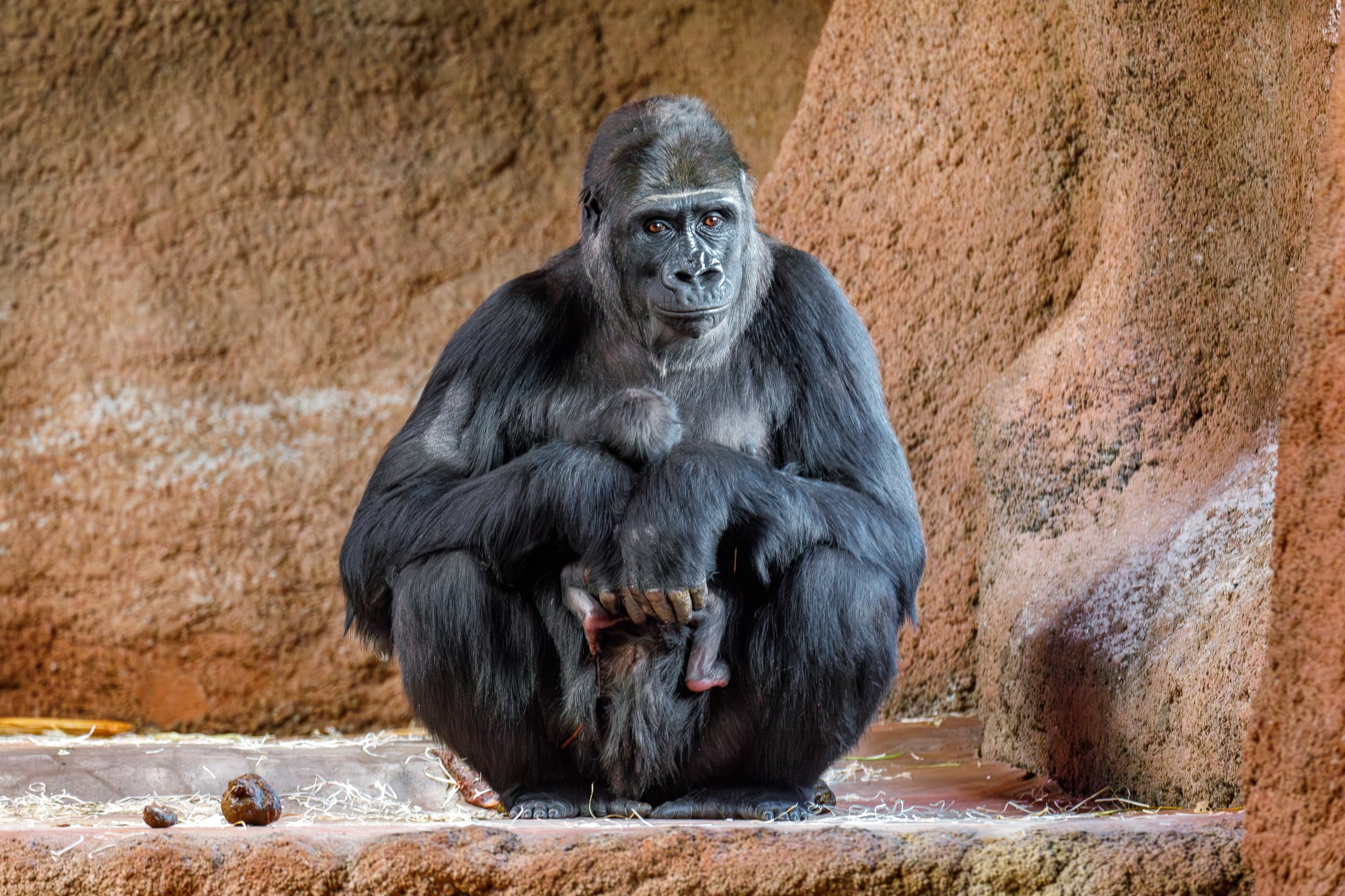
Duni, a western lowland gorilla female, with her daughter Mobi in the Dja Reserve pavilion. Photo: Miroslav Bobek, Prague Zoo
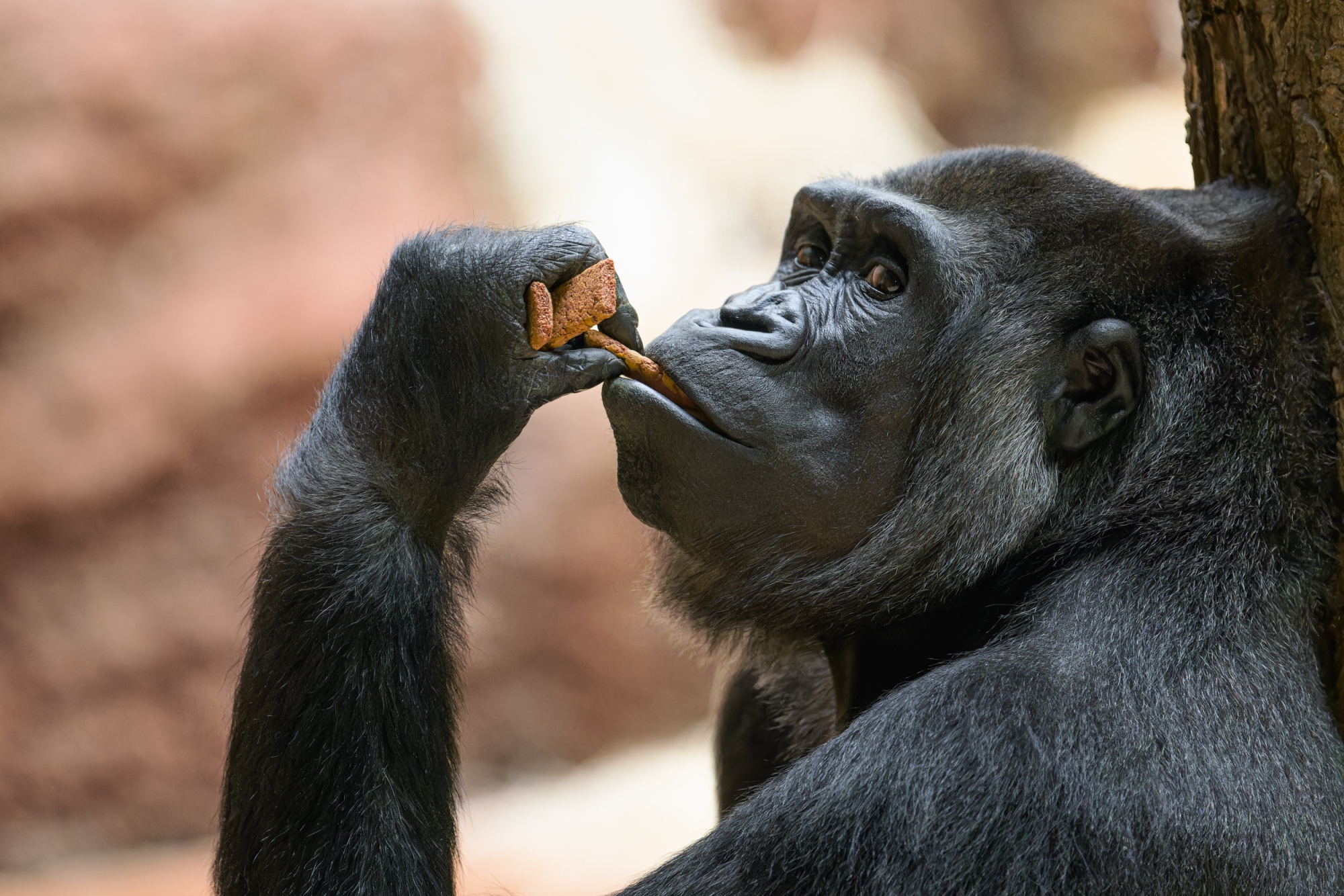
Duni, a western lowland gorilla female, in the Dja Reserve pavilion. Photo: Petr Hamerník, Prague Zoo
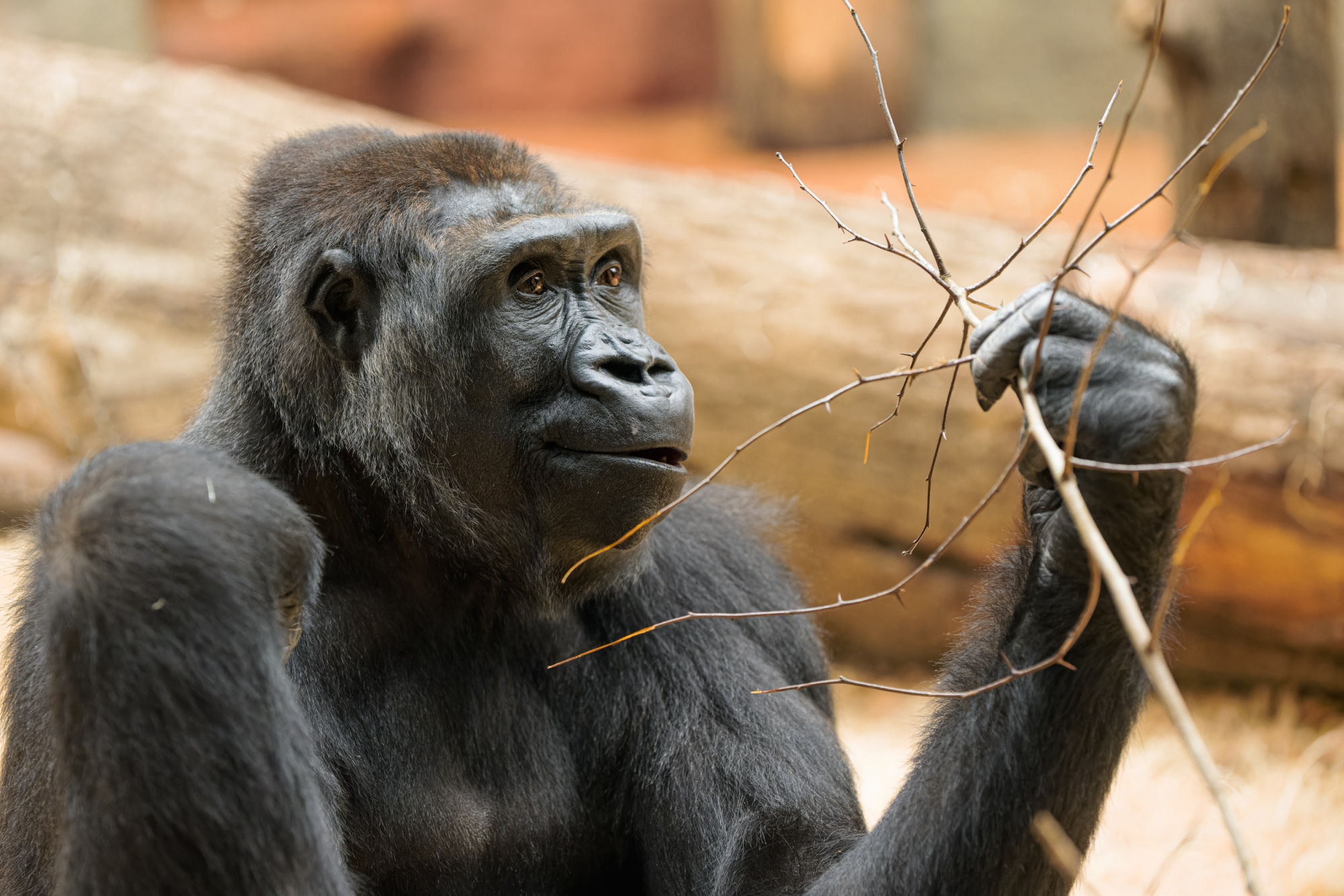
Duni, a western lowland gorilla female, in the Dja Reserve pavilion. Photo: Petr Hamerník, Prague Zoo
SHINDA
Date and place of birth: 14 June 1991, Apeldoorn Zoo (Netherlands)
Identifying features: rounded body shape, gloomy expression
Shinda is very confident and brave, often the first to explore new things. She is also a passionate foodie and tends to gain weight because of her love of food. She is the mother of Ajabu, born in Prague Zoo in April 2016.
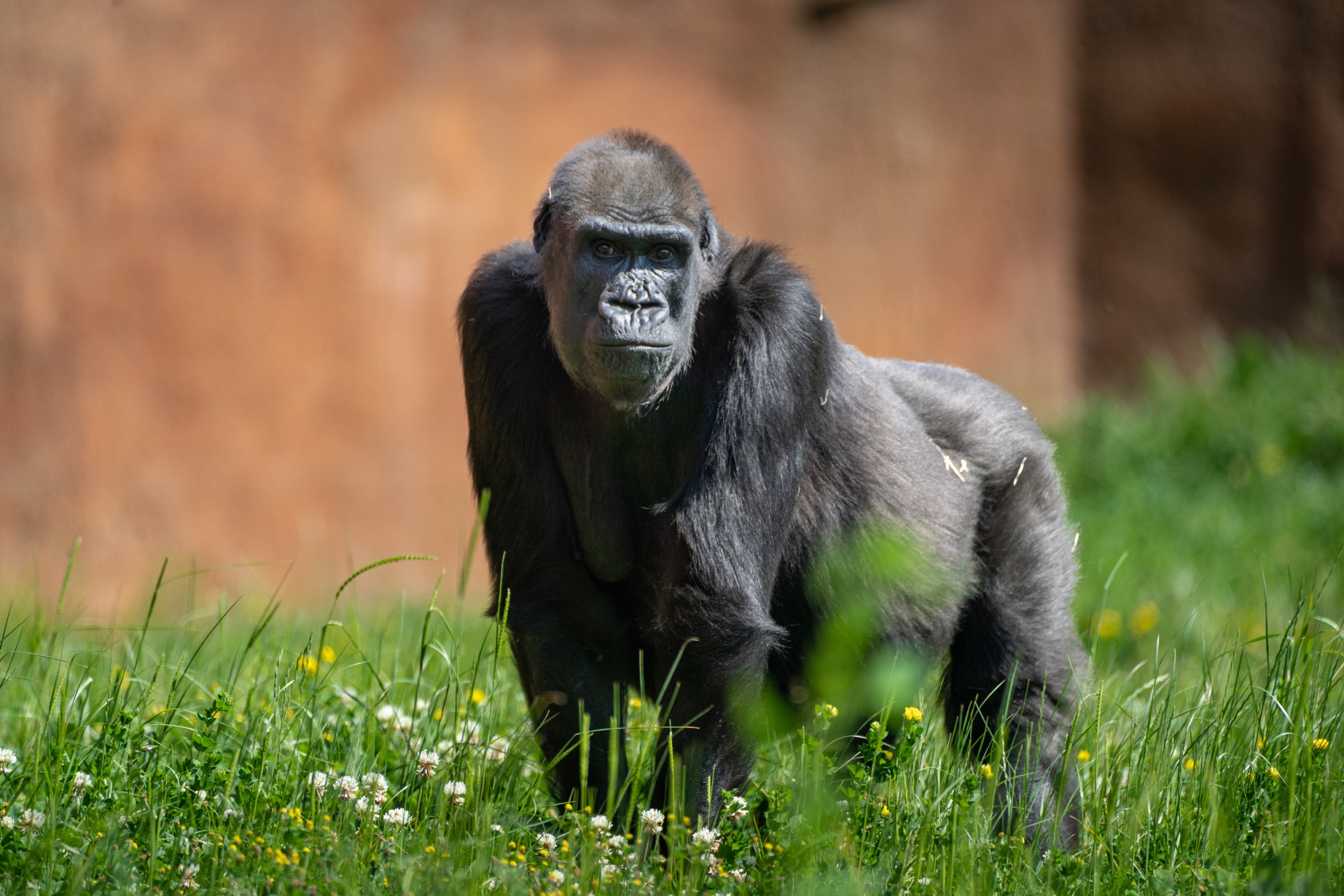
Shinda, a female western lowland gorilla, in the outdoor exhibit of the Dja Reserve. Photo: Petr Hamerník, Prague Zoo
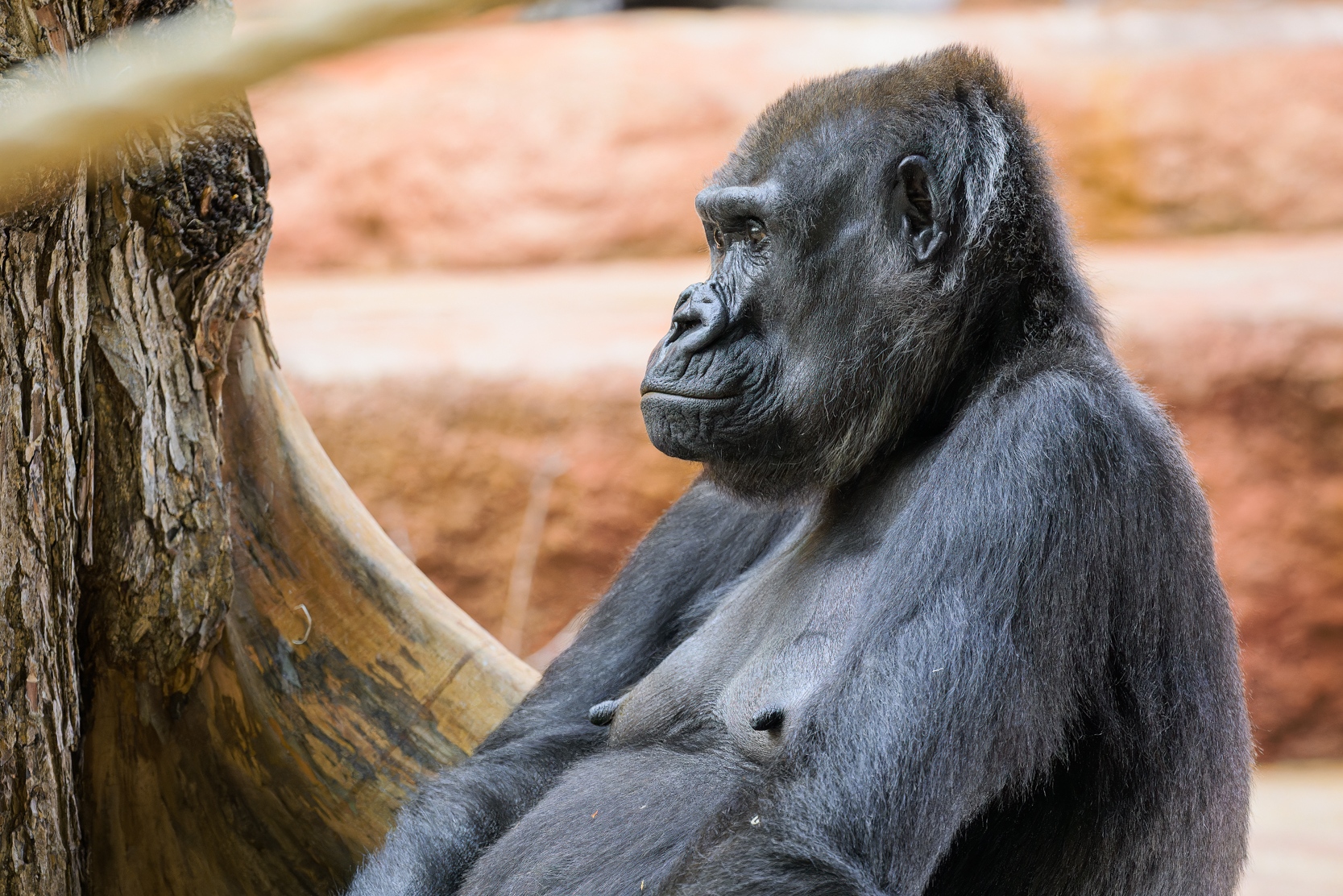
Shinda, a female western lowland gorilla, in the Dja Reserve pavilion. Photo: Petr Hamerník, Prague Zoo
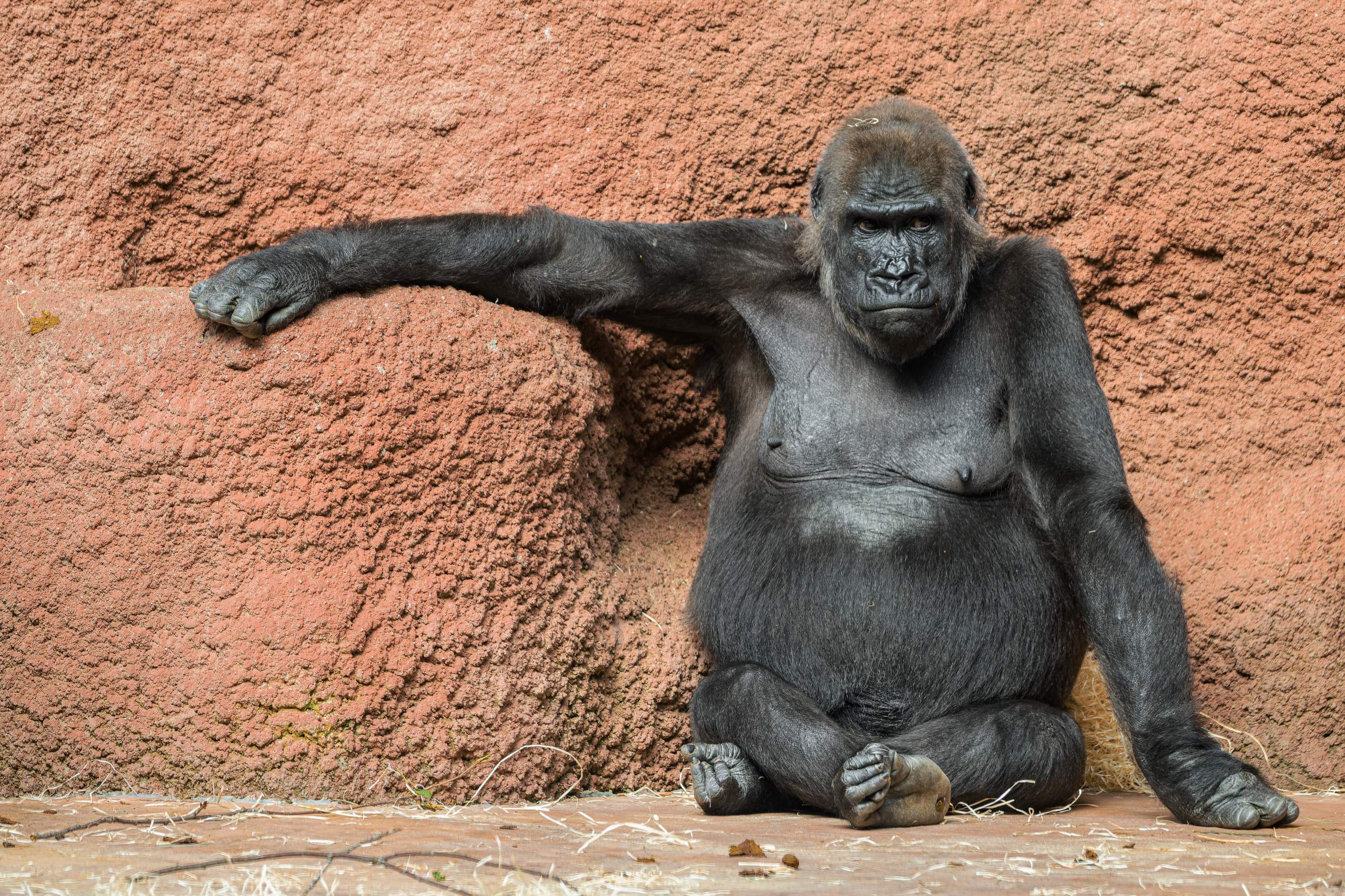
Shinda, a female western lowland gorilla, in the Dja Reserve pavilion. Photo: Petr Hamerník, Prague Zoo
KIJIVU
Date and place of birth: 18 March 1993, Apeldoorn Zoo (Netherlands)
Identifying features: rather narrow head, balding forehead
Compared to her half-sister Shinda, Kijivu is more timid and shy. She has become a mother five times at Prague Zoo. Her first offspring, Moja, was born in 2004. Her sons Kiburi and Nuru live with their father Richard in the Mefou Centre in the lower part of the zoo. In 2024, she gave birth to a daughter named Gaia in the new Dja Reserve pavilion.
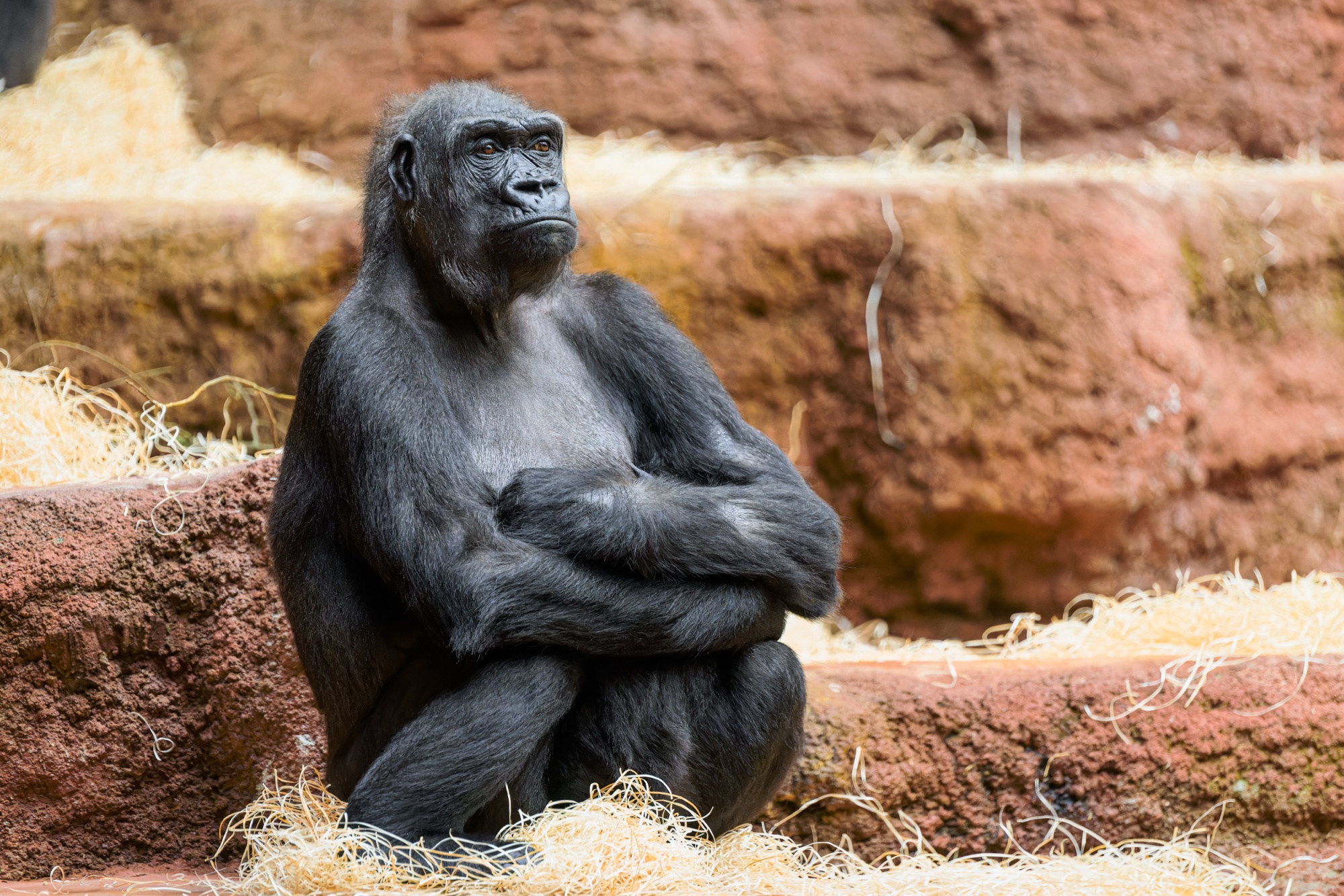
Kijivu, a western lowland gorilla female, in the Dja Reserve. Photo: Petr Hamerník, Prague Zoo
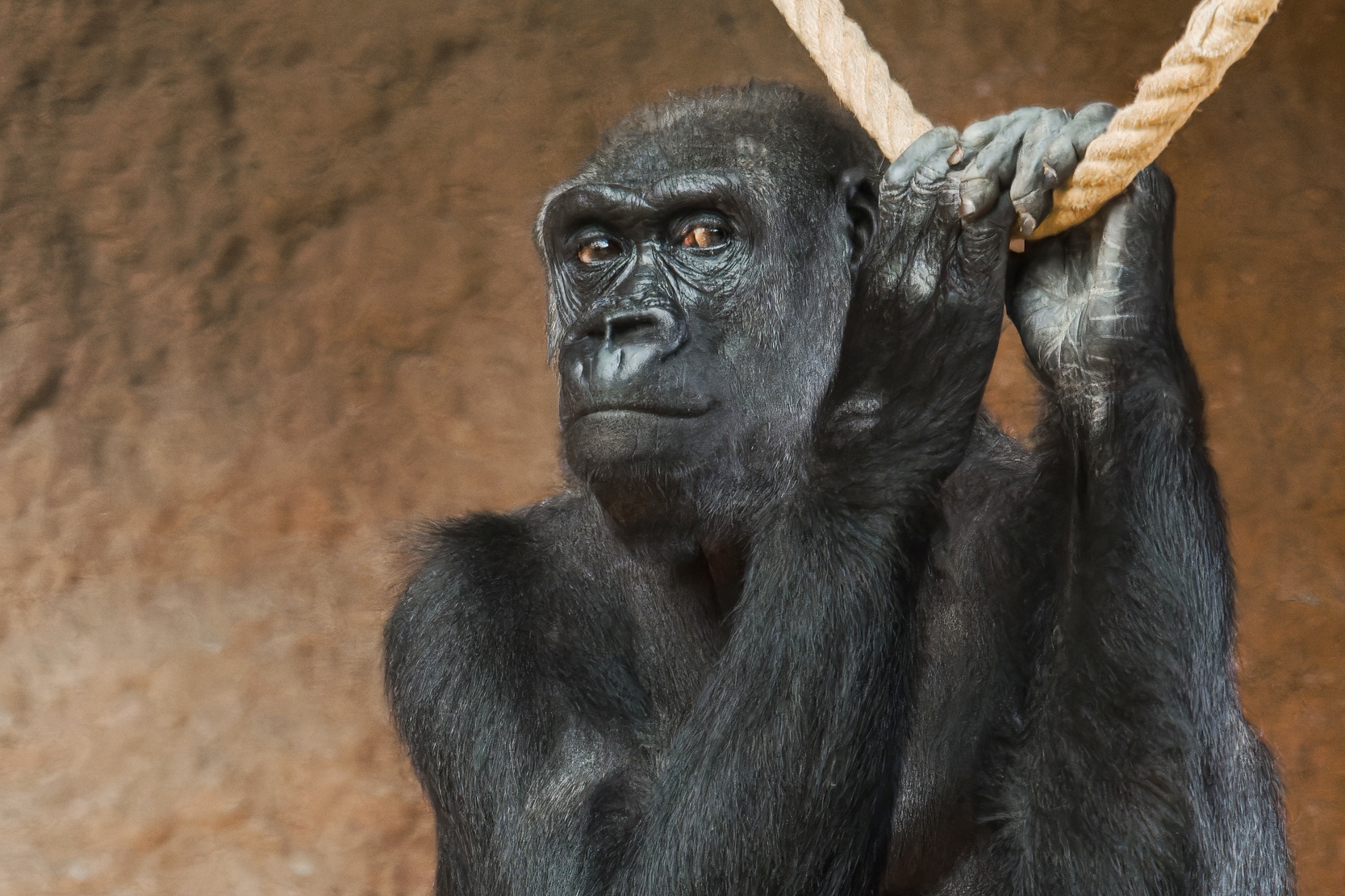
Kijivu, a western lowland gorilla female, in the Dja Reserve. Photo: Petr Hamerník, Prague Zoo
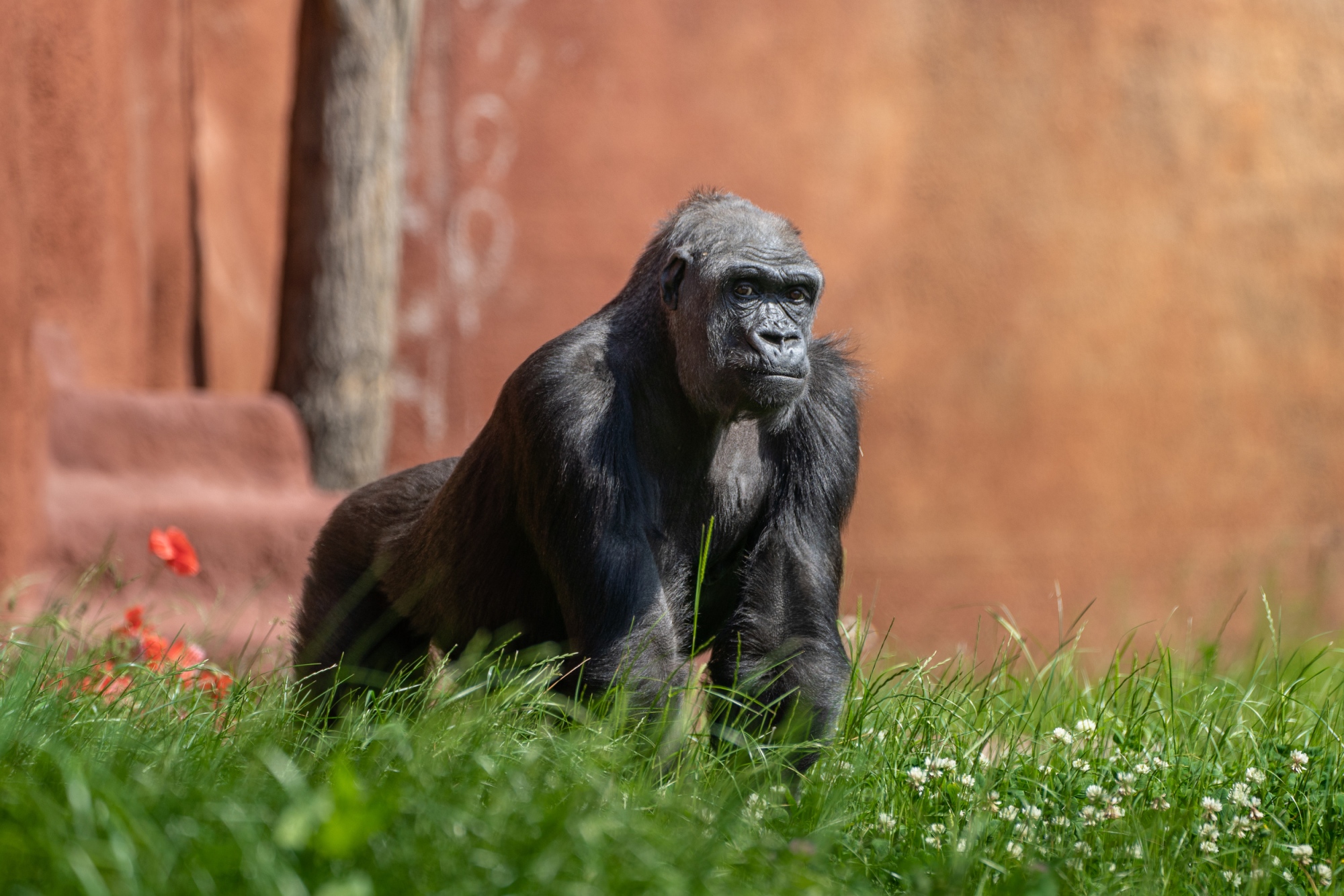
Kijivu, a western lowland gorilla female, in the outdoor exhibit of the Dja Reserve. Photo: Petr Hamerník, Prague Zoo
KAMBA
Date and place of birth: 1972, Cameroon
Identifying features: long grey sideburns, greying fur
Kamba originates from the Cameroonian rainforest, where she was captured as a baby by poachers in the early 1970s and sold to Europe. Due to her calm nature and experience, she acts as a strong unifying figure and full-time “auntie” in the Prague group.
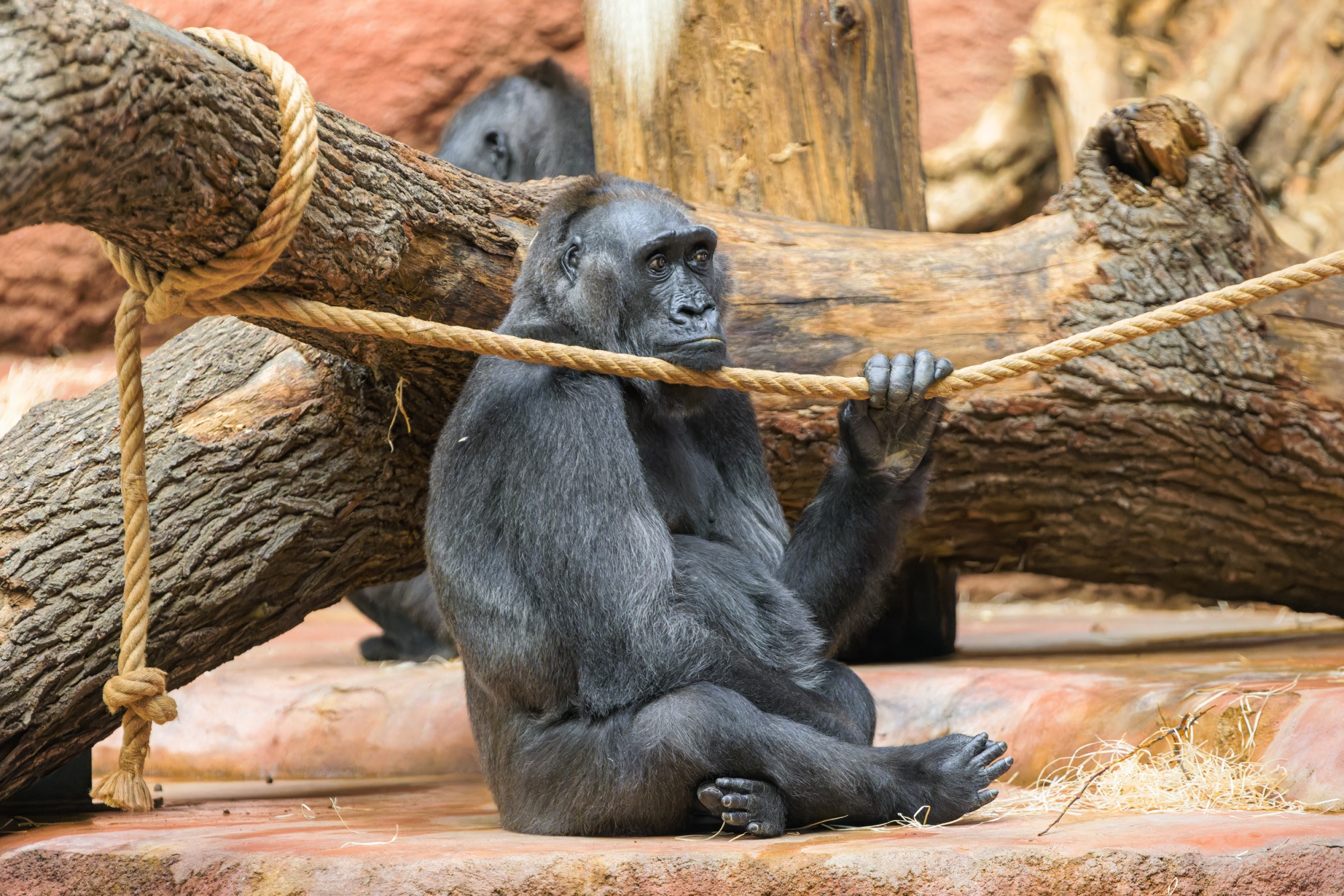
Kamba, a female western lowland gorilla, in the Dja Reserve. Photo: Petr Hamerník, Prague Zoo
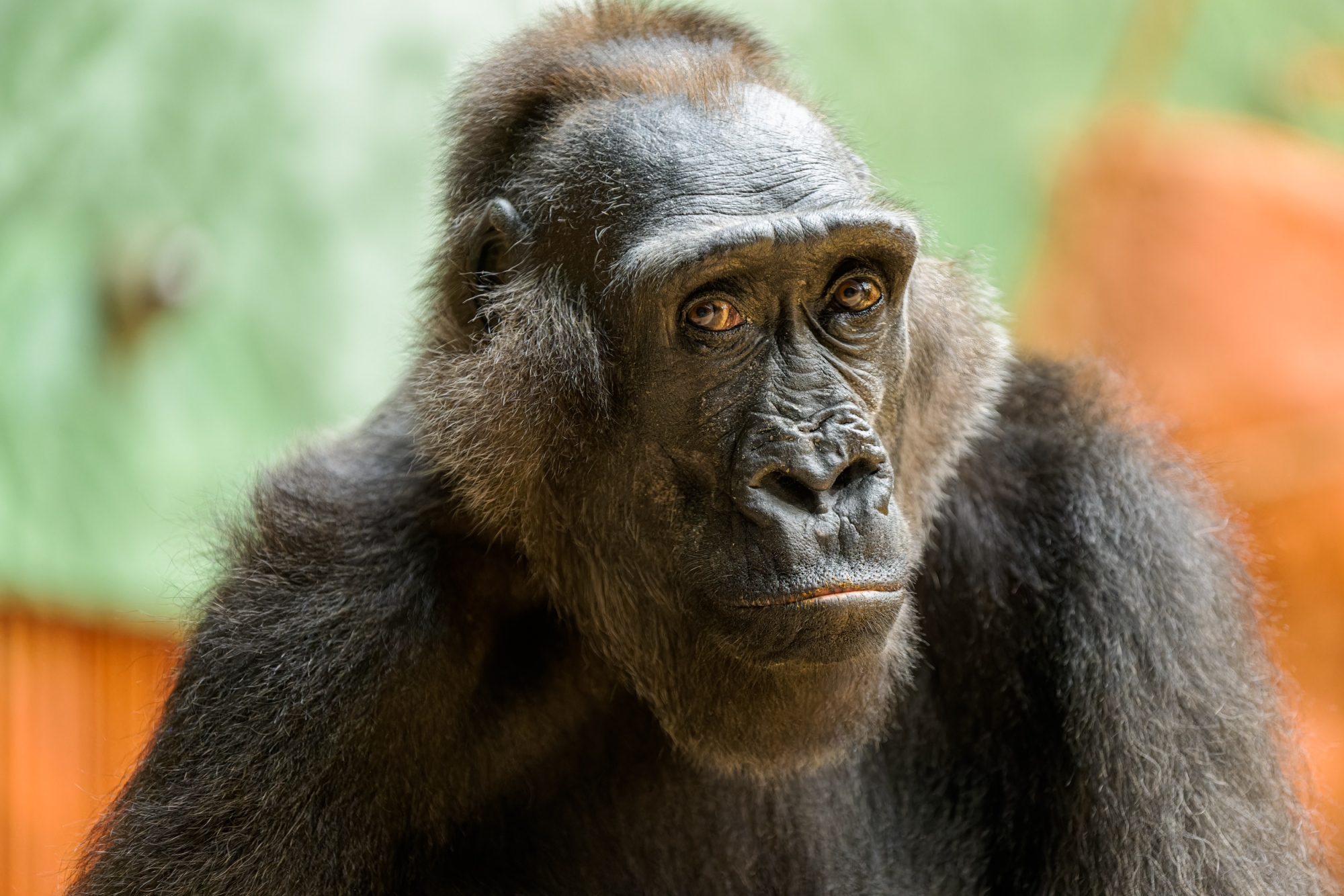
Kamba, a female western lowland gorilla, in the Dja Reserve. Photo: Petr Hamerník, Prague Zoo
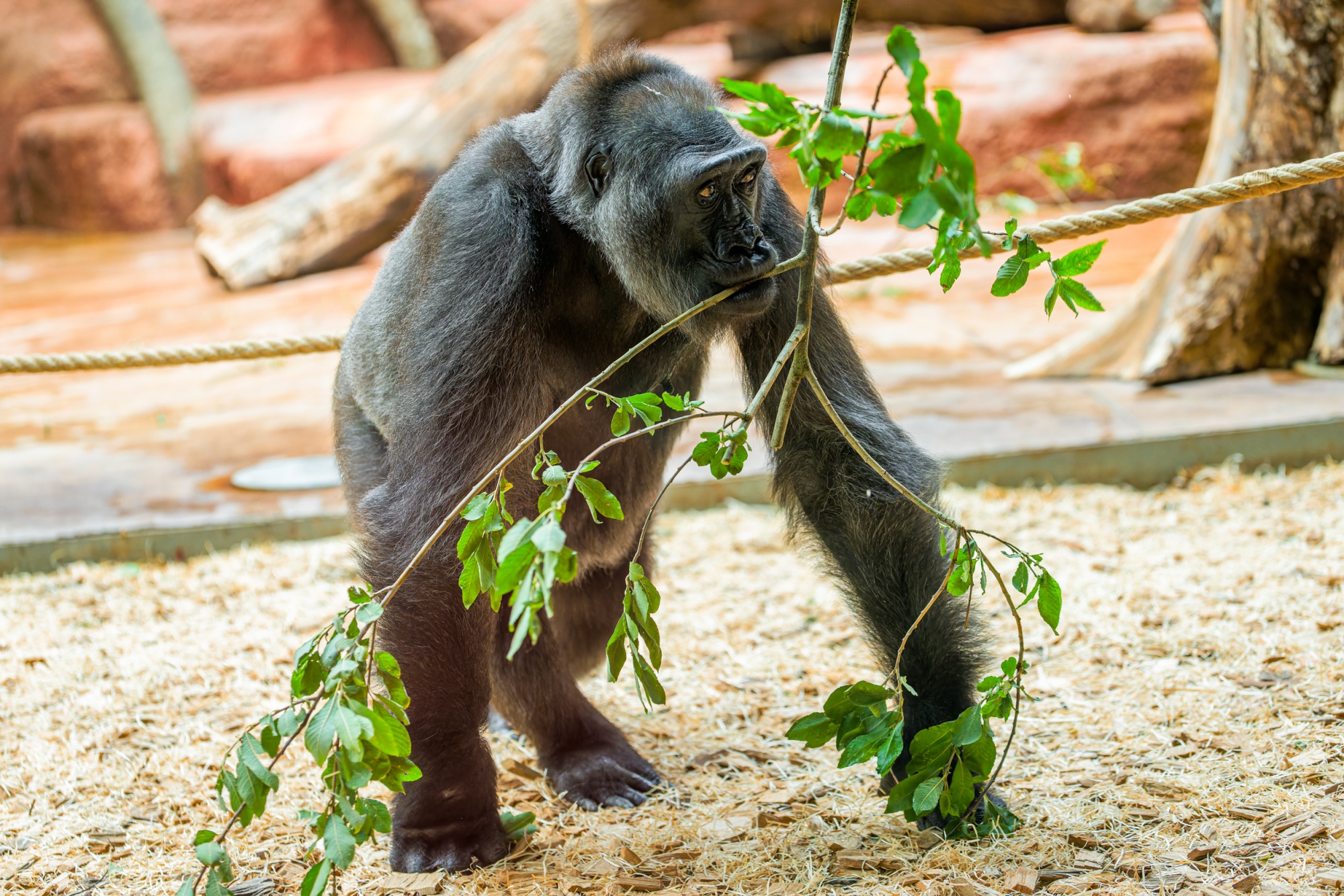
Kamba, a female western lowland gorilla, in the Dja Reserve. Photo: Petr Hamerník, Prague Zoo
AJABU
Date and place of birth: 23 April 2016, Prague Zoo (Czech Republic)
Identifying features: still a youngster, therefore smallest of the “grown-ups”
Ajabu is the first and only offspring of Richard and Shinda, who had previously been considered infertile for many years. His birth was therefore a big surprise. Like his mother, he’s hot a hard streak and is a big eater.
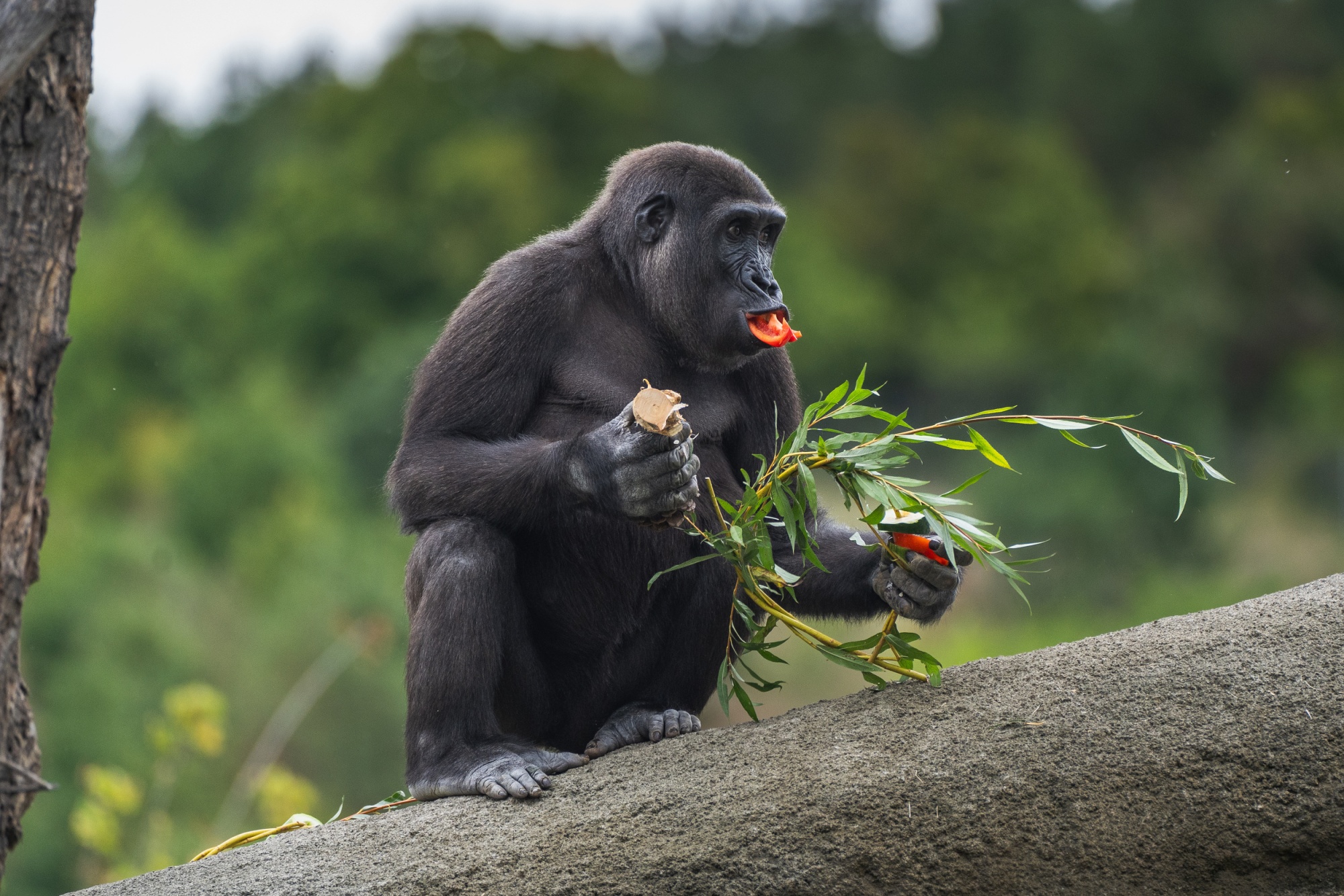
Ajabu, a western lowland gorilla male, in the outdoor exhibit of the Dja Reserve. Photo: Oliver Le Que, Prague Zoo
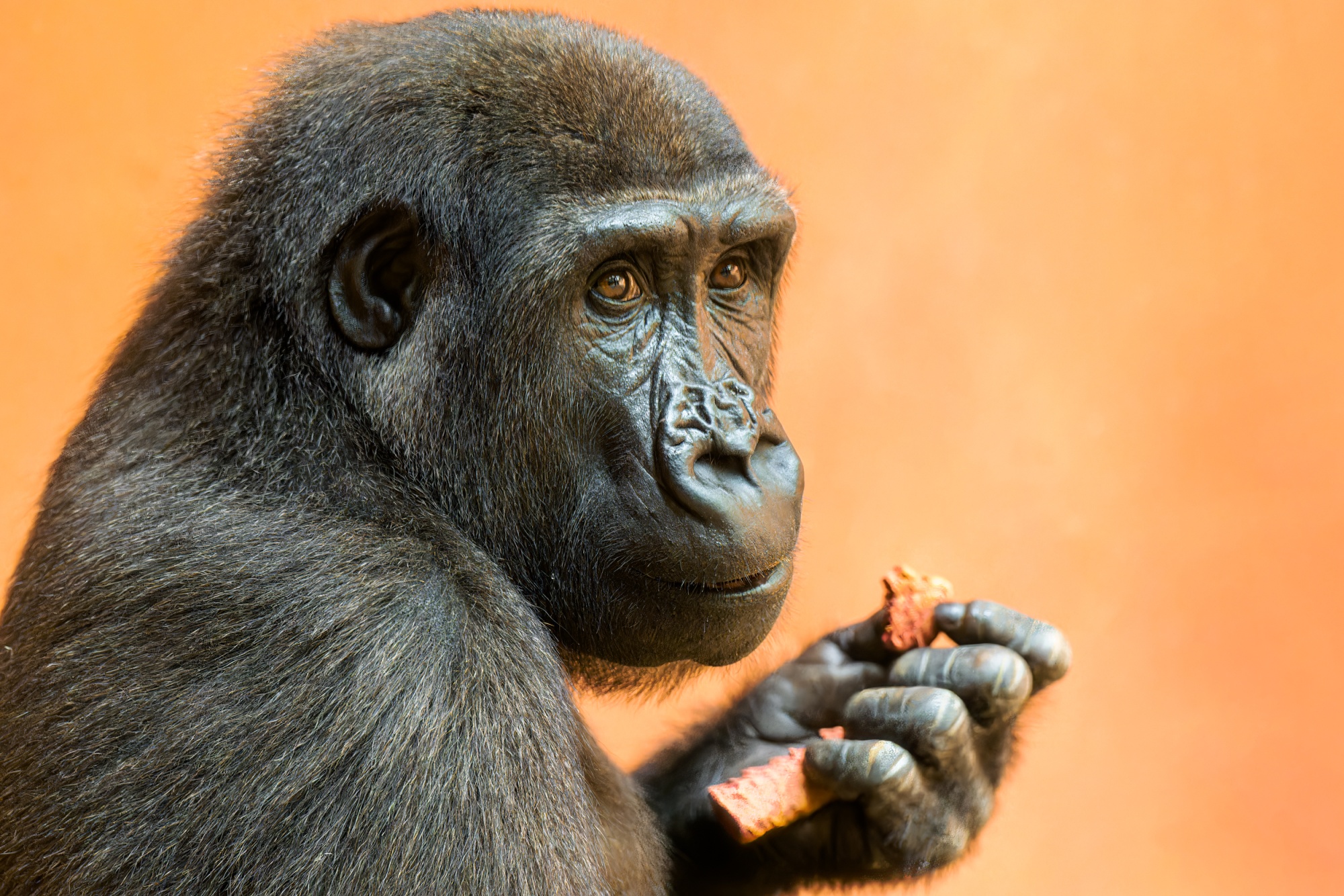
Ajabu, a western lowland gorilla male, in the Dja Reserve. Photo: Petr Hamerník, Prague Zoo
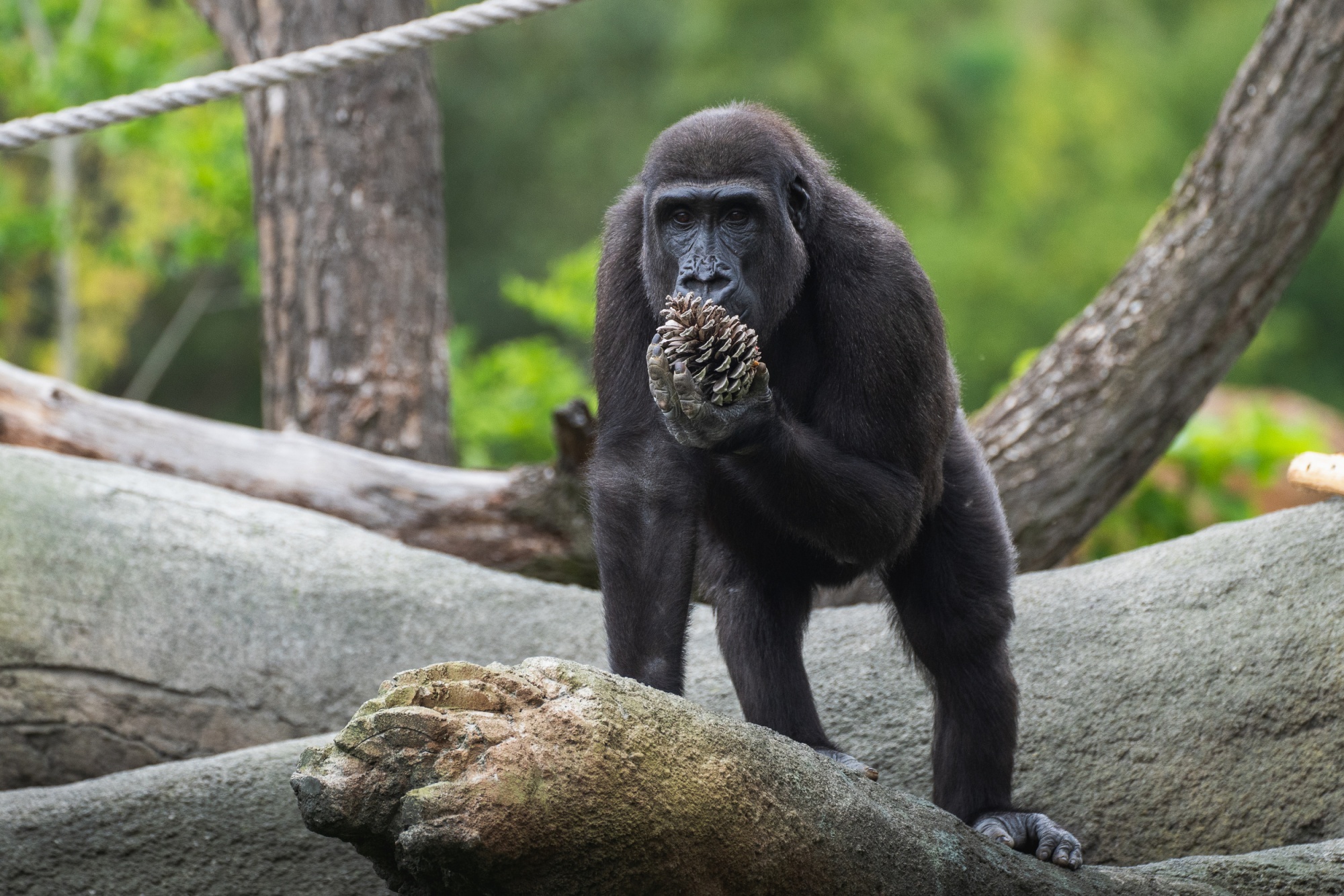
Ajabu, a western lowland gorilla male, in the outdoor exhibit of the Dja Reserve. Photo: Oliver Le Que, Prague Zoo
MOBI
Date and place of birth: 2 January 2024, Prague Zoo (Czech Republic)
Identifying features: missing patches of hair on the head
Mobi is the first offspring of Duni and Kisumu and the first gorilla to be born in the Dja Reserve pavilion. She is also the granddaughter of the famous Moja, the first gorilla ever born in the Czech Republic (now living in Spain), and the great-granddaughter of Kijivu, one of the females in our gorilla family. The name Mobi means “heiress” or “successor” in the Badwe’e dialect of the Koonzime language, spoken around the Cameroon’s Dja Faunal Reserve. It was suggested by a student from Somalomo in Cameroon and subsequently chosen by the Czech public in a final vote. The name reflects several generations of gorillas successfully reared at Prague Zoo while also creating a connection with central Africa, where the zoo has long been dedicated to the conservation of wildlife in general, and gorillas in particular.
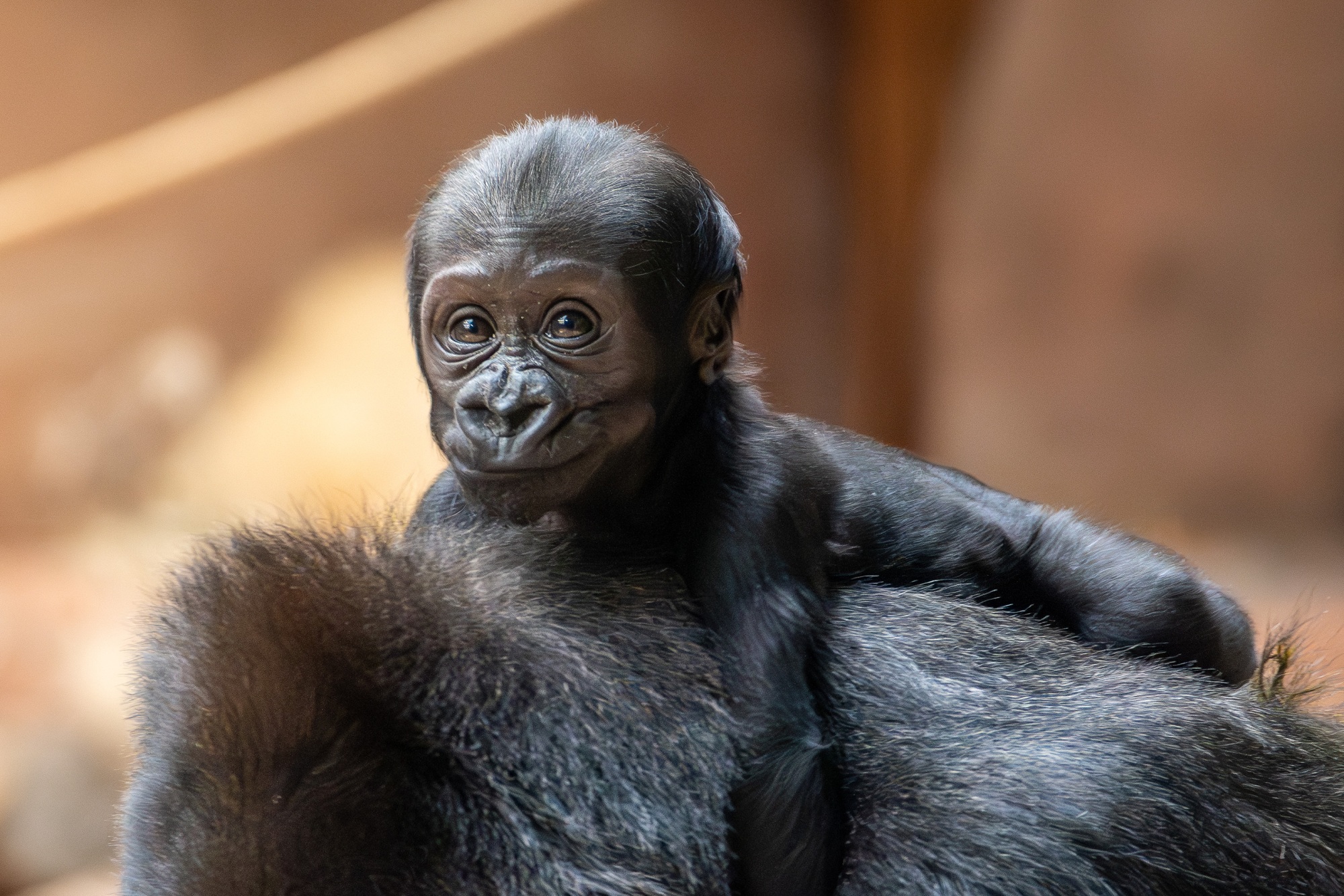
Mobi, a female western lowland gorilla born in January 2024 in the Dja Reserve. Photo: Oliver Le Que, Prague Zoo
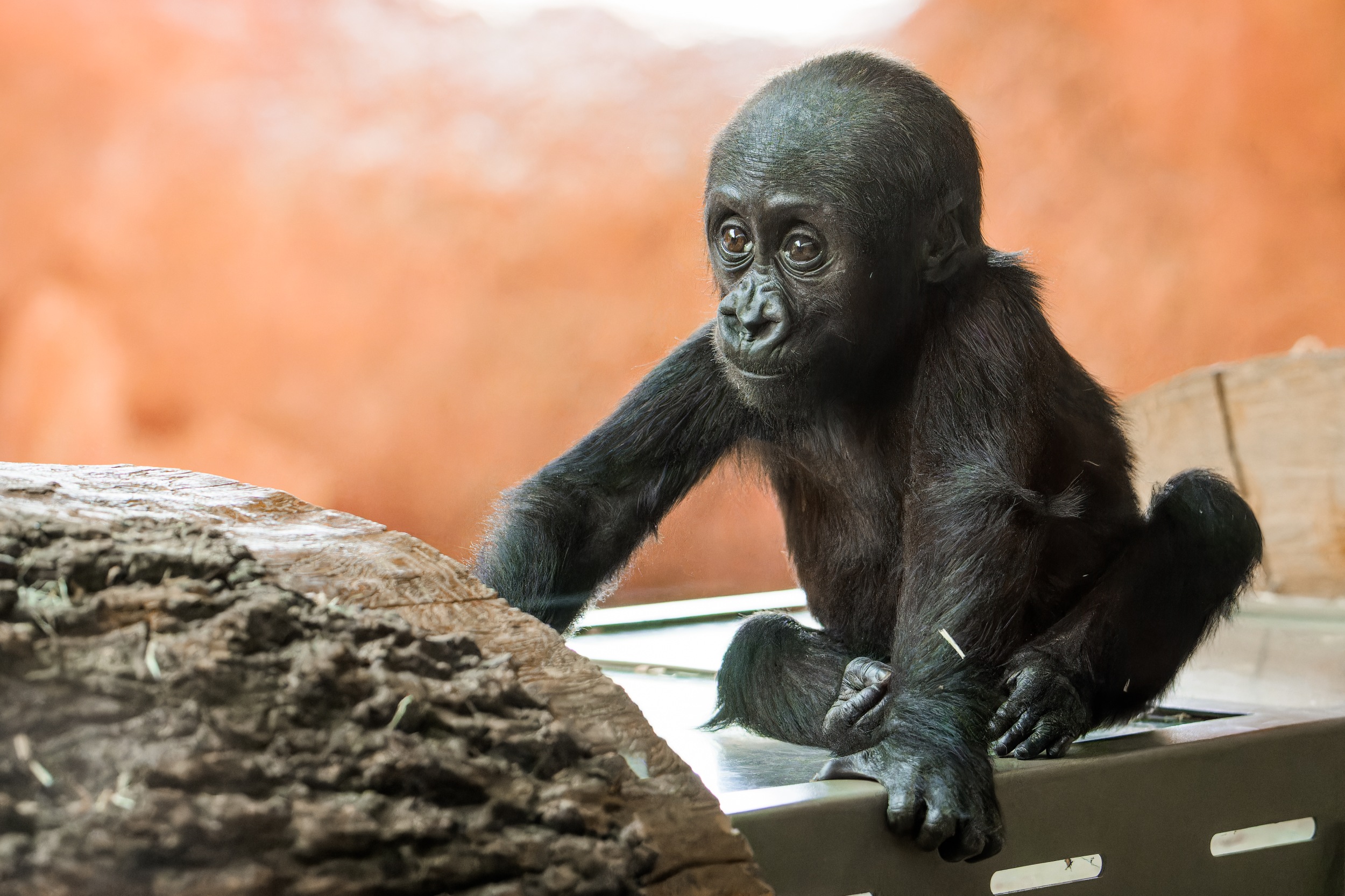
Mobi, a female western lowland gorilla born in January 2024 in the Dja Reserve. Photo: Petr Hamerník, Prague Zoo
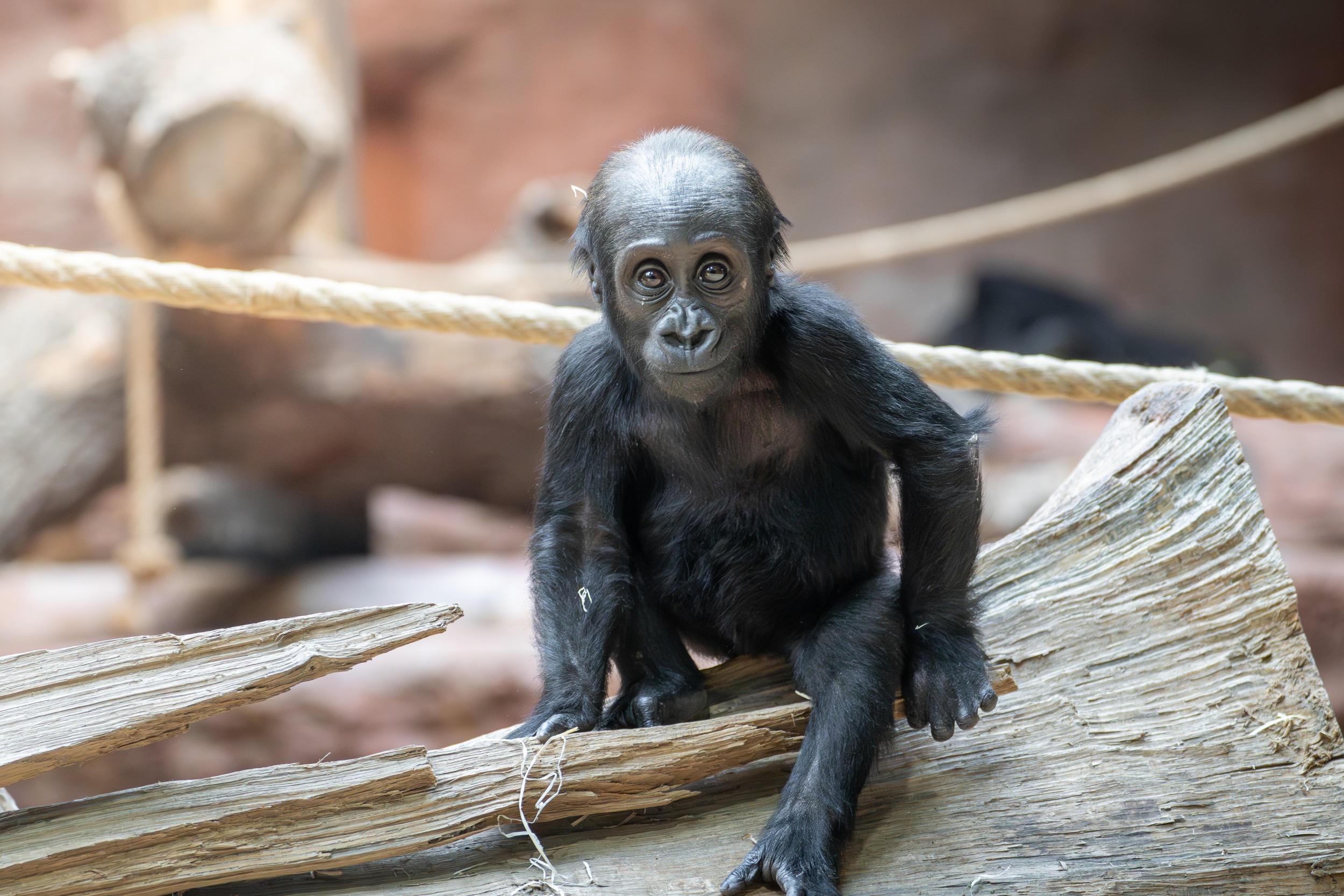
Mobi, a female western lowland gorilla born in January 2024 in the Dja Reserve. Photo: Petr Hamerník, Prague Zoo
GAIA
Date and place of birth: 12 April 2024, Prague Zoo (Czech Republic)
Identifying features: younger and smaller of the two gorilla infants
Gaia is the second gorilla infant born in the Dja Reserve pavilion. Her parents are Kisumu (father) and Kijivu (mother). The godmother of the youngest member of our gorilla family is the world-famous primatologist Jane Goodall, who explained her choice of name as follows: “I chose the name Gaia for this little gorilla for two reasons. The first is its meaning, as Gaia is the Greek goddess of the Earth, sometimes even representing the planet itself. Gorillas and we humans are all part of life on this planet, and we must do everything we can to keep it that way. The second reason is a young chimpanzee named Gaia who lives at Gombe. She is now the last surviving member of a family line that stretches back to the very first troop I studied in Tanzania in the 1960s. Now she has her namesake in Prague.”
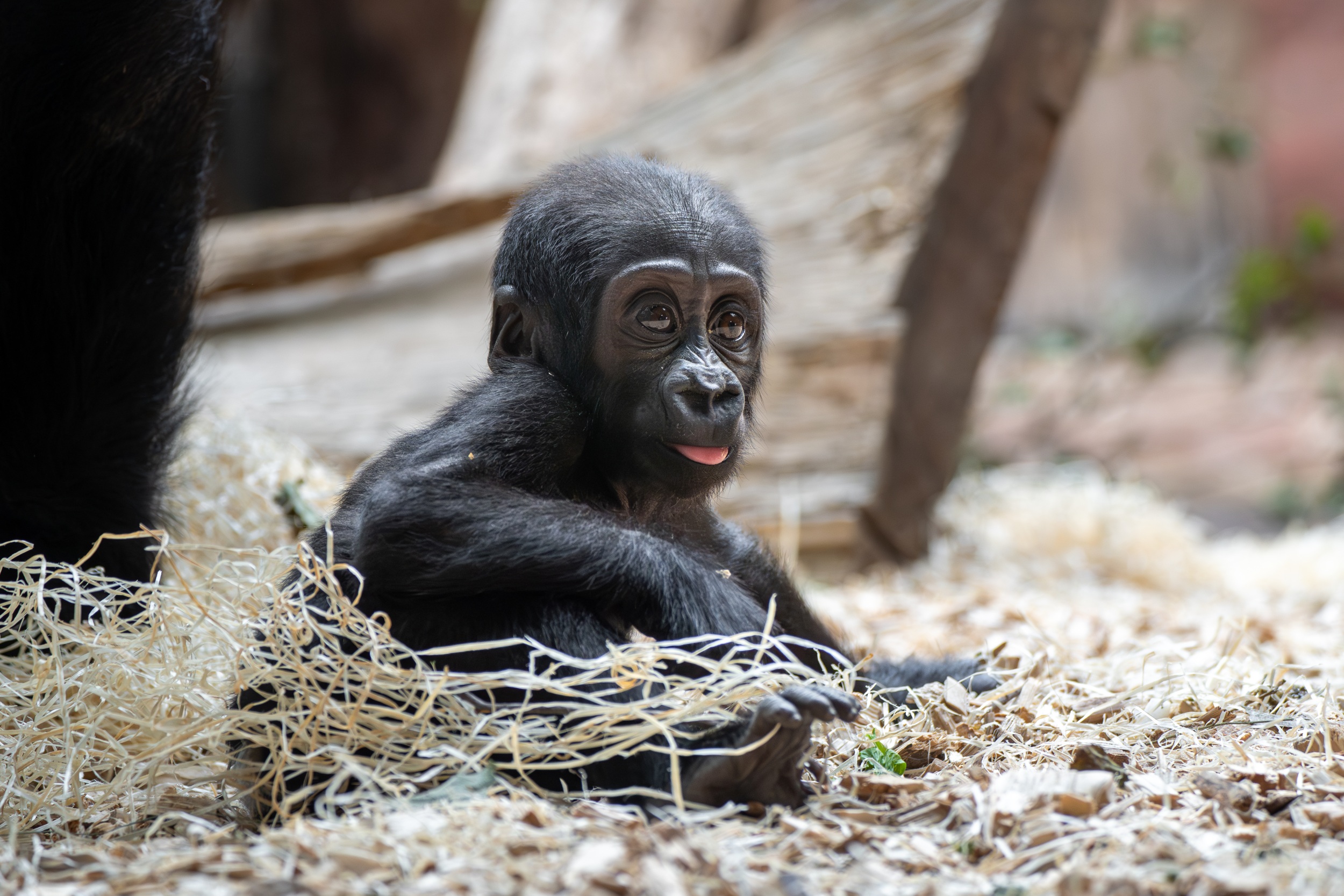
Gaiai, a female western lowland gorilla born in April 2024 in the Dja Reserve. Photo: Petr Hamerník, Prague Zoo
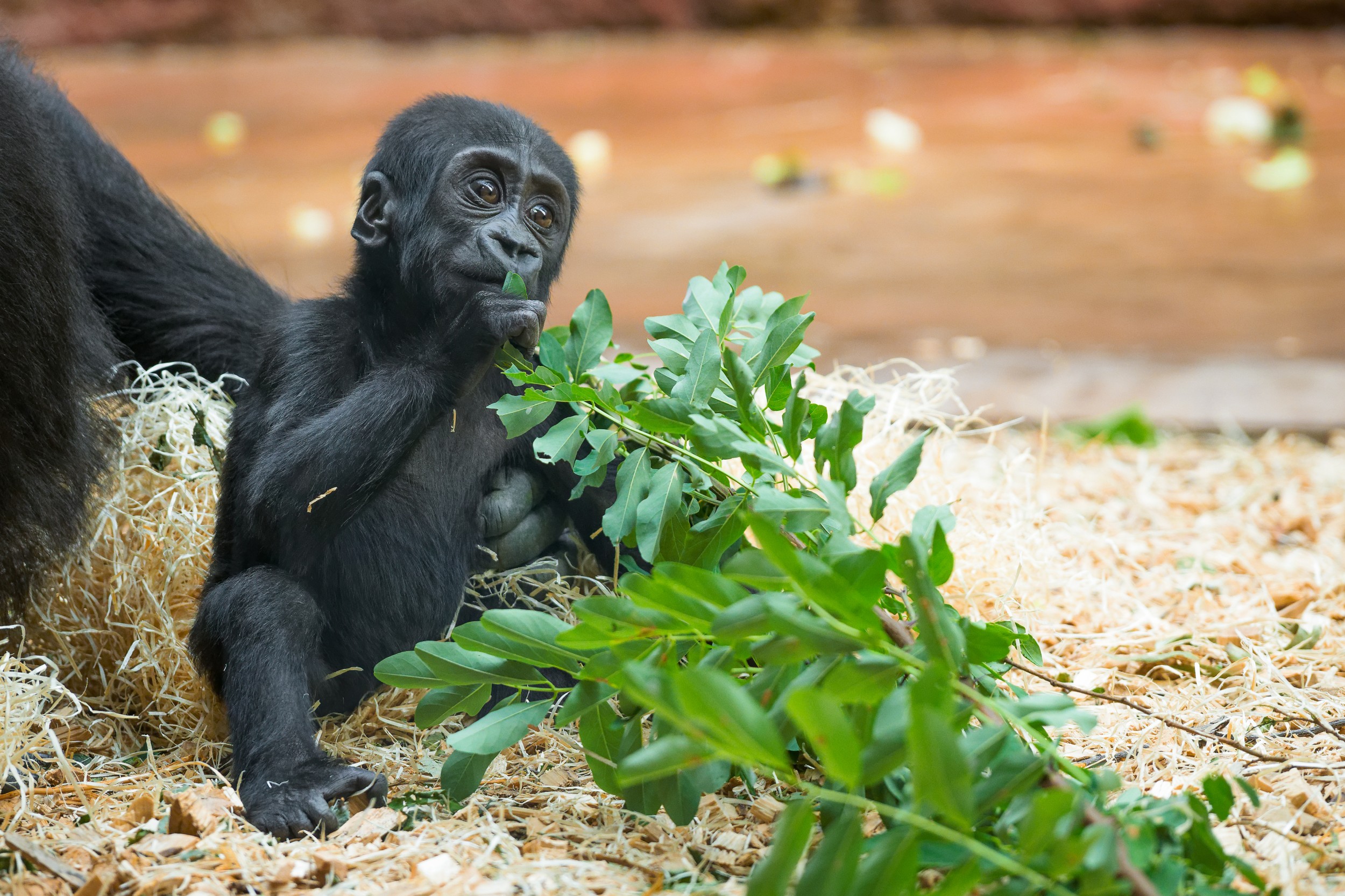
Gaia, a female western lowland gorilla born in April 2024 in the Dja Reserve. Photo: Petr Hamerník, Prague Zoo
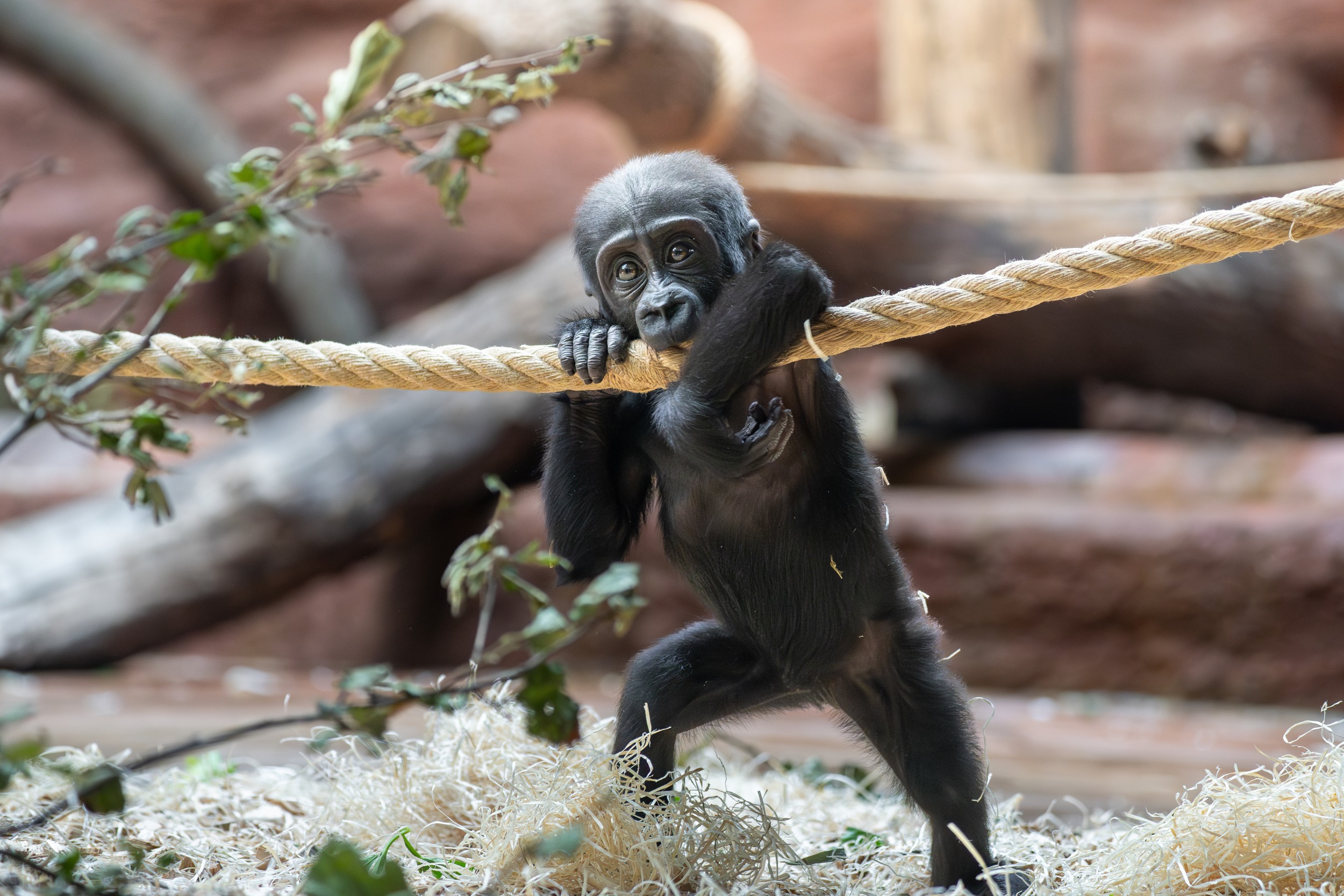
Gaia, a female western lowland gorilla born in April 2024 in the Dja Reserve. Photo: Petr Hamerník, Prague Zoo
Male gorilla group in the Mefou Centre
Richard and his two sons, Kiburi and Nuru, have formed a male group in the older of the gorilla houses, now known as the Mefou Centre. This arrangement is a great asset to the European Ex situ Programme (EEP), as there is currently a surplus of male gorillas, making it difficult to find suitable placements for them.
ZOOPRAHA.CZ
Contacts
- The Prague zoological garden
U Trojskeho zamku 120/3
171 00 Praha 7
Phone.: (+420) 296 112 230 (public relations department)
e-mail: zoopraha@zoopraha.cz
Others
